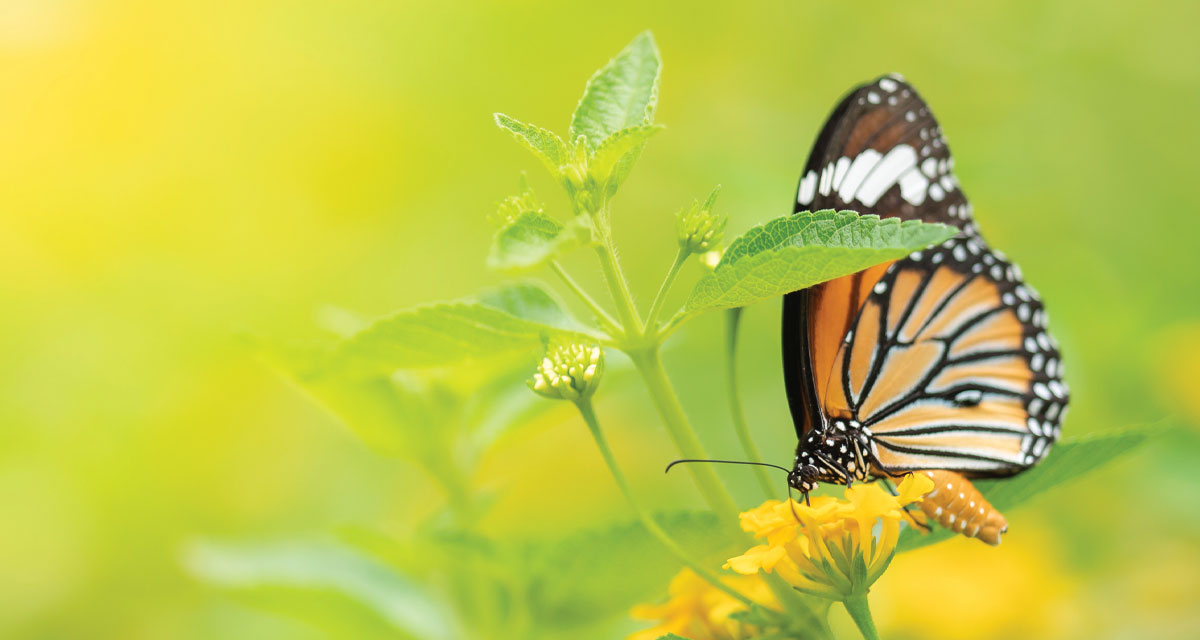BY: JAMIE LOBER
Many families have backyard birdfeeders and enjoy watching the beautiful visitors that come to their property. Small but alluring, butterflies have gained a lot of attention over the past few years. The North Carolina Cooperative Extension has reported that our state is home to more than 175 species of butterflies, making it a perfect spot to create a garden and see what happens. They say that a successful butterfly garden will need to provide host plants for the larvae, as well as nectar plants or other appropriate food sources for the adults.
Know Your Population
The North Carolina Government has documented some common types of butterflies found in our state. The state General Assembly even went as far as to designate the Eastern tiger swallowtail as the official state butterfly in 2012. You want to be on the lookout for the following:
- Pipevine swallowtail
- Cabbage white
- Cloudless Sulphur
- Spicebush swallowtail
- Zebra swallowtail
- Clouded Sulphur
- Eastern-tailed blue
- Red admiral
- American lady
- American snout
- Pearl crescent
- Common buckeye
- Question mark
- Pearly-eye
- Viceroy
- Monarch
It can help to look up photos of these butterflies so you can recognize them when they make their way into your backyard. It will take commitment, time, and dedication, for your area to blossom.
Make a Plan
Consider what will be the best means of attracting butterflies.
You have many options:
- Native plants to the region also require the least maintenance and watering, since they have adapted to the area;
- Nectar plants;
- Flowers with different sizes and depths, as some butterflies like small flowers while others like large;
- Remember to put your garden in the sun, as most butterflies are only active when it is sunny.
Treat the Home with Care
Plan ahead to make sure you can accommodate the butterflies’ needs that will soon be visiting you. Making a habitat can be a fun family project. The North Carolina Cooperative Extension has some suggestions, such as:
- Leave brush piles or old foliage, so butterflies have shelter, especially from the wind;
- Have a puddle of mud or a sandy area for male butterflies to hang out;
- Have some small pebbles and large flat rocks for butterflies to spend time on while getting some sunshine;
- Fruit peels and rotten fruit are necessary;
- Minimize use of pesticides as you do not want to unintentionally kill the precious butterflies;
- Try not to release purchased butterflies even for special occasions, as they can spread disease to the native butterfly population.
Butterflies are known to bond with humans and crave the friendship. In Japan, the butterfly symbolizes transformation, prosperity, good luck, and good health. Some cultures say that seeing a monarch butterfly means that you are on the right path to reaching your goals. Spiritually, many people view the butterfly for its joy and positivity. Often it can represent a life challenge, where someone comes out as a better person. You want to educate yourself about butterflies as you observe what is happening in your garden. There are so many facts that make butterflies unique, such as:
- They cannot fly if they are cold;
- A newly emerged butterfly cannot fly;
- Butterflies taste with their feet;
- They see ultraviolet colors that are invisible to the human eye;
- Butterflies have four wings, not two, as most people think;
- There is evidence that some butterflies demonstrate intelligence and reasoning skills;
- Rain can be a threat to butterflies;
- Butterflies eyes are called compound lenses because they can see many things in many different directions at the same time;
- Adult butterflies tend to like red, yellow, orange, pink, and purple;
- Butterflies actually range from 1/8 inch to 12 inches in size.
Get Acquainted and Learn by Example
Look around at some professional set-ups. It can be fun to visit local butterfly gardens, or even check out what a friend or neighbor has done in their backyard. You will also notice certain flowering plants that butterflies like best. Sometimes it can come down to trial and error. You may try a plant that is not successful, and that is okay. The next plant you add might be a better fit for your habitat. Container plants, which are basically hanging baskets or window boxes, can be a great idea as well. Do not forget that you will want your garden to be in a place that you can easily observe from your window or deck, so you can take pictures of your guests and welcome them. Every family is different. You may have a stable and successful butterfly garden in a month, or it may take a year. You want to remain persistent and know that the benefits of having this special amenity in your backyard are well worth the work.






















